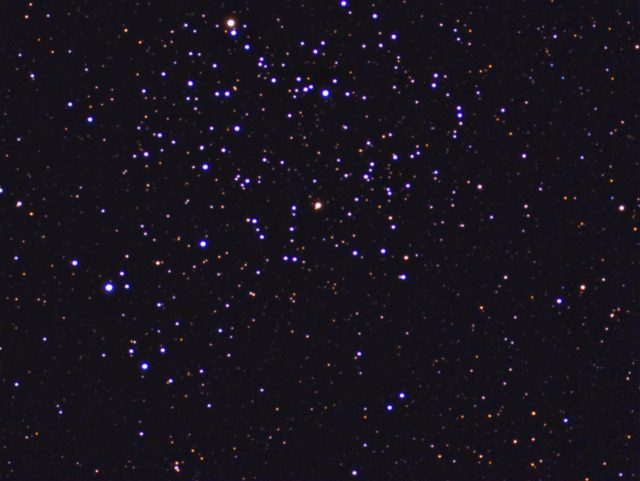
The next part of my M35 mosaic? It may fit, but the color balance is going to be a PITA. I’ll have to get working on it now that I got another piece of the puzzle.

More EAA fun with the Sony IMX224-based camera. This was taken during the nightime of Dec 12/13, 2017. The final version here has over 80 minutes of data. It was acquired in a high LP environment with no filters on the camera except for the UV/IR cutoff.
I need to get a UHC filter for it, but as you can see, I might do good to use none just to get the base colors and use the UHC just for extra nebulosity, only.

Here’s an object I’ve been itching to shoot with the RT IMX224 cam. This is only 27 minutes worth of 20 sec exposures! 🙂
I think that between 500 and 1000 subs would really be what this object needs with this setup. In the meantime, I put the above image together with 25 minutes of DSLR camera data taken with the same scope. Check it out:
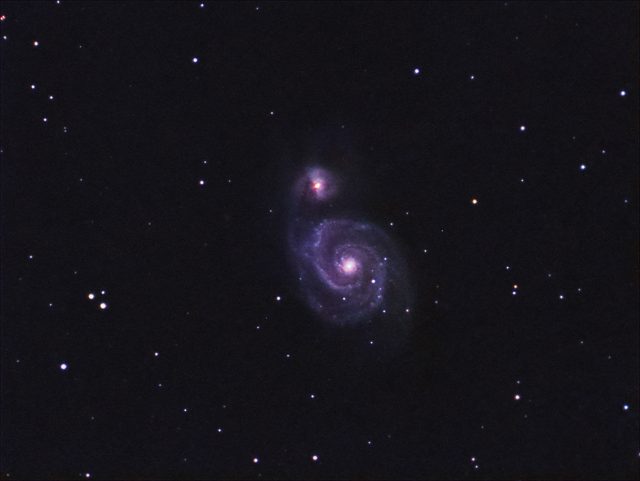
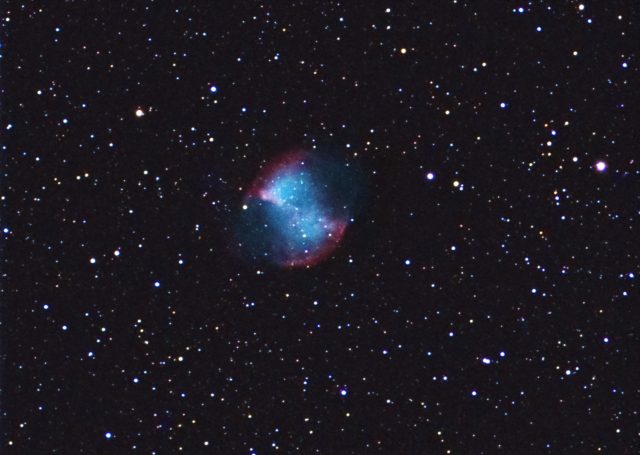
I rushed to setup and shoot this one before it went behind a tree. It was only 97 frames at 8 seconds for a total of about 13 minutes. But, I love how it turned out with this Sony IMX224 camera. It looks as good as or better than most of my DSLR shots of the same object.
It looks even better if I combine the two cameras’ datasets into one image to get the best of both:
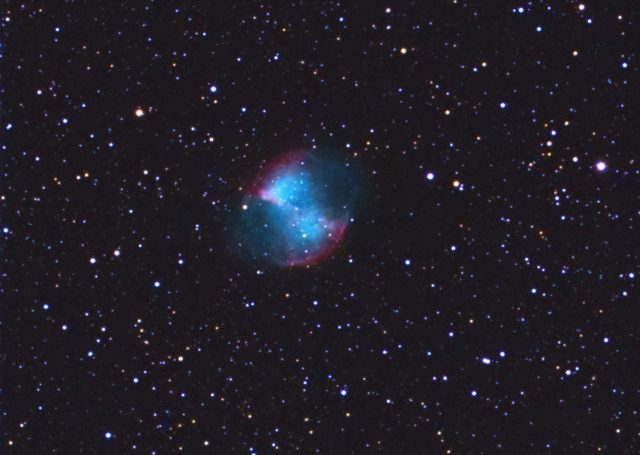
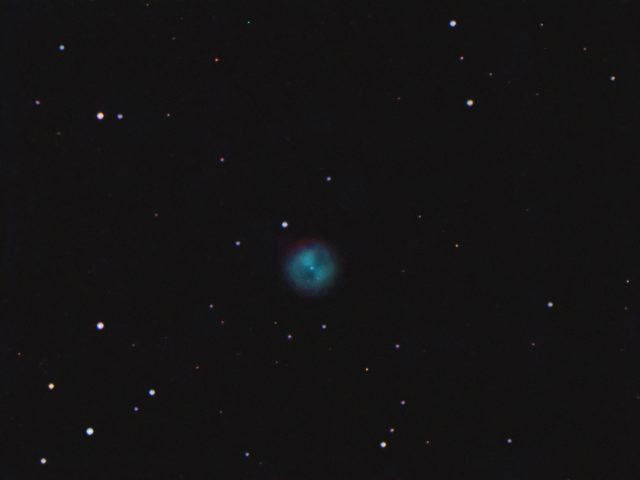
I tried long exposures with no gain and no darks using the Rising Tech Sony IMX224 eyepiece/guider cam to image the Owl Nebula, recently. I was using it like I would one of my Canon DSLR cameras with long exposures at low ISO when shooting in bad LP conditions.
Hot pixels were worse than I thought, so I had to do some aggressive noise reduction. Next time, I will definitely use darks based on this experience. The camera has low read noise, but not low hot pixels with exposures this long.

I imaged this galaxy with the Rising Tech Sony IMX224-based Eyepiece/Guider cam the other night. It could use more time, but what I did get shows it well enough. Color on the stars were lacking since the gain settings I was using washed them out.

I had in mind when starting this that I could get a mosaic going for M35 and its nearby companion, NGC 2158. So, I started on NGC 2158 first since it is the more interesting cluster. By the time I was finished, my window to shoot was just about over, so I moved on to something else and did not finish the mosaic.
What I did get came out OK for 8 second exposures. I will probably go back to it the next time I use the Rising Tech Sony IMX224 eyepiece cam. It is actually enjoyable watching SharpCap do live stacking with the short exposures. Reminds me of the old days when I was doing mostly planetary imaging. lol 🙂
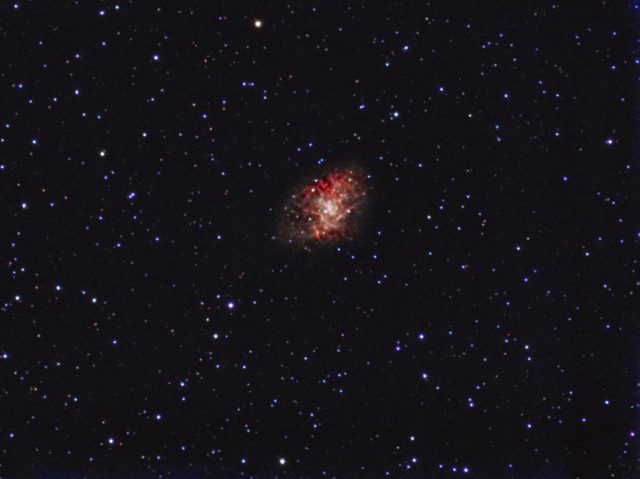
The Crab with an 85mm objective. Scopes of this size are not normally known to produce good images of M1, the Crab. But, I tried anyway since I am still learning the ropes with the IMX224.
Taken from the middle of a metro area in a Bortle Red zone. 8 sec seems to give good results with the LP levels at this location. More exposure just gets more LP and very little more, if any, faint target material.
Above is the gussied-up and gaudy version. Below is the not-so-gaudy version with less saturation and curves boost.

I also left more green behind, since the Crab has some green parts. It shows that better but also shows more of the LP that I had to cut through to get the shot.
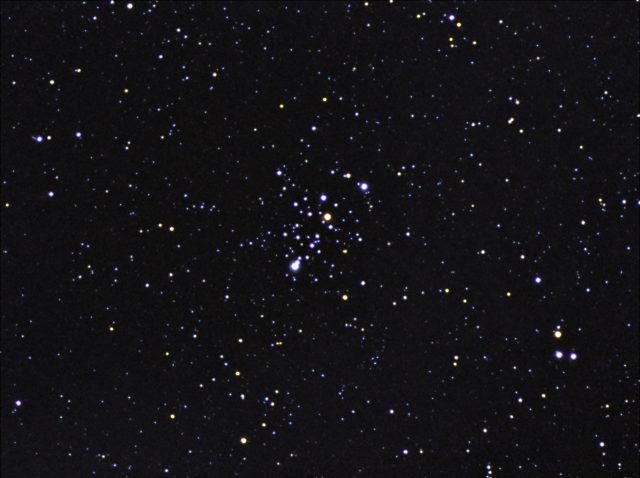


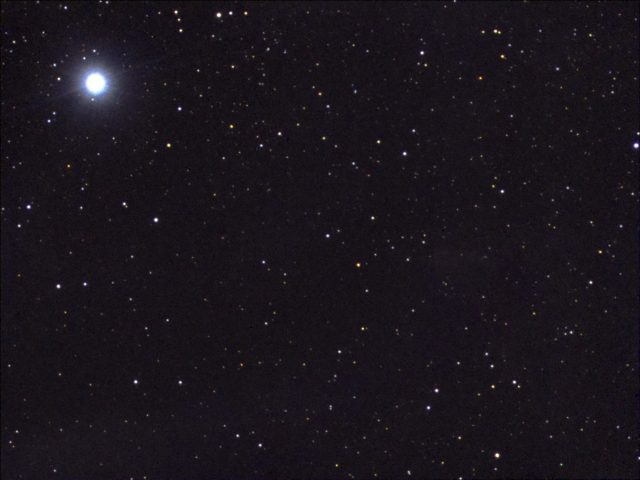
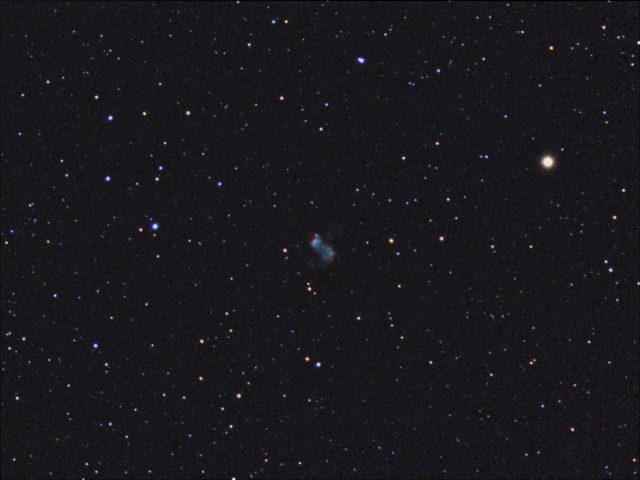
Here is a roundup of objects I was able to see during my most recent Electronically Assisted Astronomy (EAA) observing session. These were taken in a Bortle Red zone and under a nearly full moon on Dec 1, 2017.